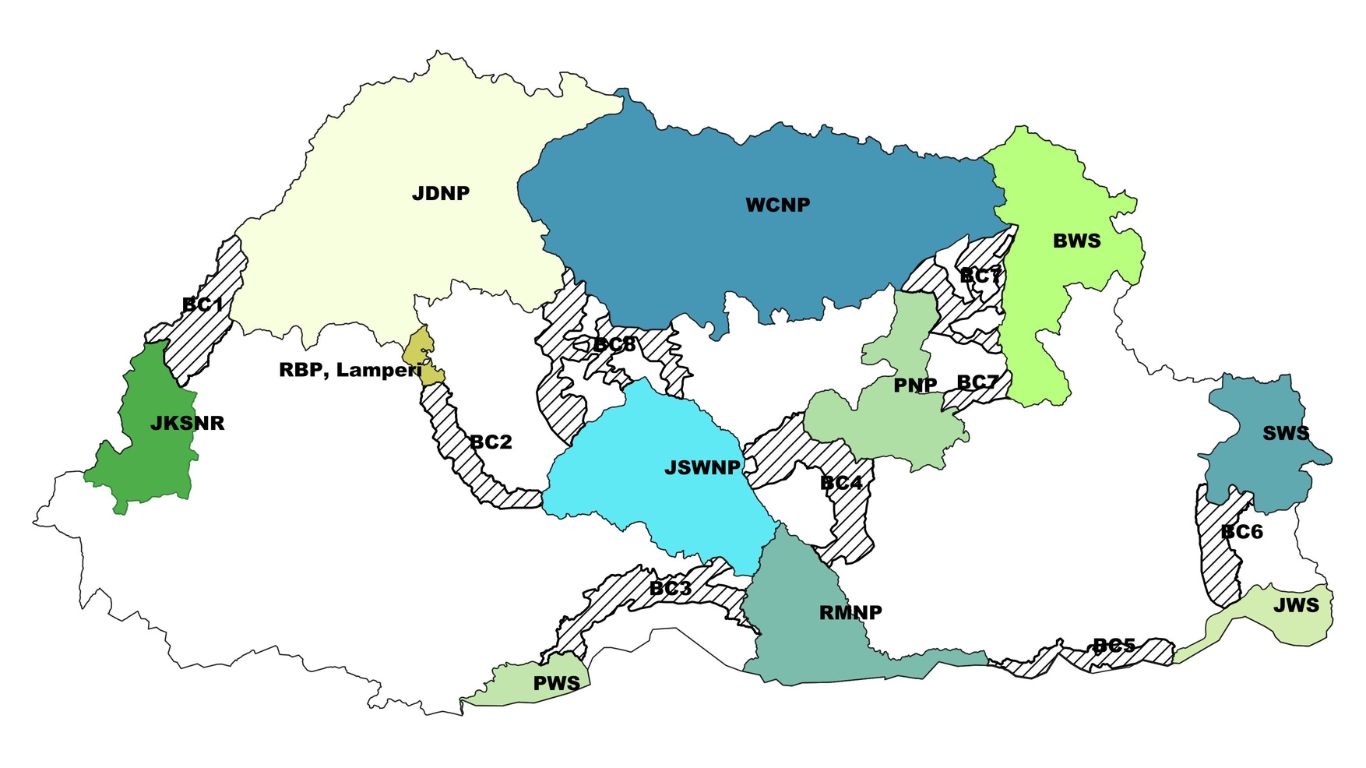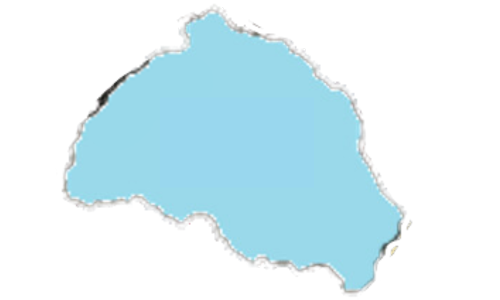Bhutan for Life Landscape
Please click or hover over the specific Park Area or BC to view more.

Jigme Dorji National Park
There are 376 glaciers in JDNP which constitutes 42.44% of the glaciers of the country.
- Second largest national Park
- Total area: 4,316 km2
- Location: Covers 5 districts in the north west of the country
- Park is a water source for various mega hydropower projects
- Oly park in the country trekked by tourists through its paradisiacal alpine meadows and snow-capped mountains
- Provides crucial connectivity to the Kanchenjunga Conservation Complex in northeast India and eastern Nepal
Wangchuck Centennial Park

Bumdeling Wildlife Sanctuary

Bumdeling forms the easternmost range for the wintering ground of the endangered.
Bumdeling forms the easternmost range for the wintering ground of the endangered Black-necked crane, and is the only place in Bhutan where Bhutan's Swallowtail was rediscovered after a long gap since its first discovery in 1932.
- Location: Covers three eastern districts of the country
- Total area: 1520.61 km2
- The Bumdeling floodplain was declared a Ramsar site, a wetland of international importance in 2012, one of only two in Bhutan
- In March 2012, BWS was proposed as a UNESCO World Heritage site for its cultural and natural heritage importance
Jigme Khesar Strict Nature Reserve

Serves as a water head for rivers and streams which are critical for the livelihoods of residents within the reserve
- Location: spreads across two western districts of the country
- The only strict nature reserve among the 10 protected areas
Jigme Singye Wangchuck National Park

Jigme Singye Wangchuck national Park links Jigme Dorji National Park and the Wangchuck Centennial National Park through the biological corridors in the north and is directly with the Royal Manas National Park in the South, thus providing connectivity between the sourthern and northern protected areas.
- Third largest protected area in the country
- Total Area: 1723 km2
- Location: Centre of Bhutan
- Park is a water source for various mega hydropower projects
- Only park in the country trekked by tourist through its paradisiacal alpine meadows and snow-capped mountains
- The park represents an important migratory corridor, especially for tigers and altitudinal migratory birds
Phrumsengla National Park
Phrumsengla National Park (PNP) has a combination of all different vegetation zones found in other parts of the country
- Location: Park covers four districts
- Total area: 905 km2
- One of the recent parks to be placed under management
Royal Manas National Park
Royal Manas National Park (RMNP): The adjoining areas of the Indian Manas and the Bhutan Manas are known as the Greater Manas Landscape and form the world's second largest protected landscape for tigers
- Oldest National Park
- Total Area: 1057 km2
- Location: South-Central part of the country
- The Royal Manas National Park has a large area of both tropical and sub-tropical ecosystems including grasslands which is distinct feature of the park
Sakteng Wildlife Sanctuary
Regardless of its comparatively small size, the sanctuary functions as one of the major watersheds benefiting downstream districts from its two main rivers and numerous lakes
- Total area: 740.60 km2
- Location: Far east of the country
Jomotshangkha Wildlife Sanctuary
As the sanctuary lies in the Indo-Malayan realm, it is a true biodiversity hotspot. It is the only refuge for the elephants of the bordering Udalguri districts of Assam, India as the habitat are degraded.
- Location: Situated in the south eastern part of the country
- One of the smallest protected areas in the country and the only protected area which does not have a management plan in place
- The National Tiger Survey (2015) also validated the presence of tigers in the Sanctuary
Click Here for More
Phibsoo Wildlife Sanctuary
The Phibsoo Wildlife Sanctuary (PWS) straddles the Indo-Malayan bio-geographic realm and protects the southernmost variant of the country's subtropical forest ecosystem
- Total Area: 269 km2
- Location: Located in the foothills of south central Bhutan
Biological Corridor 1
Biological Corridors (BCs) provide linkages and connectivity between the various protected areas

